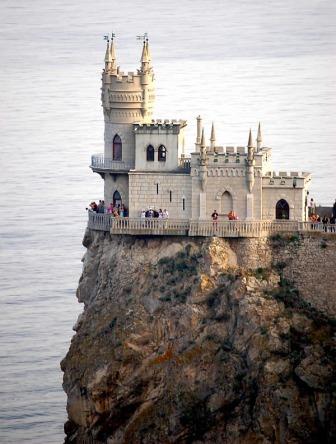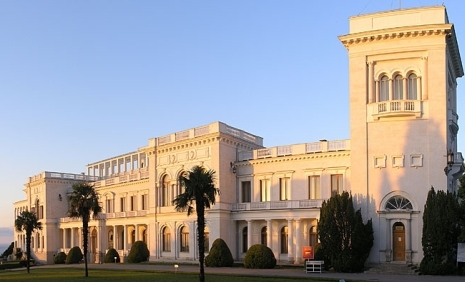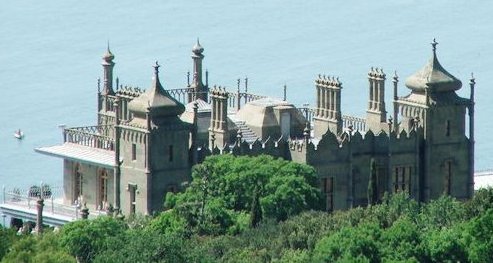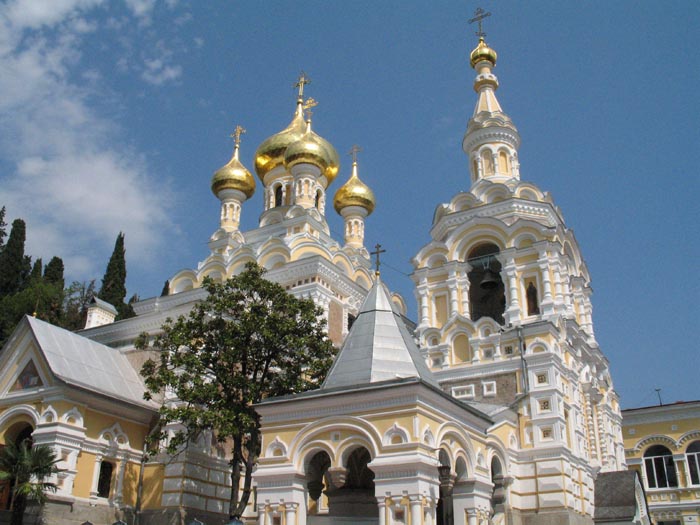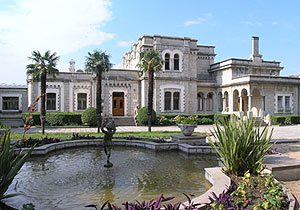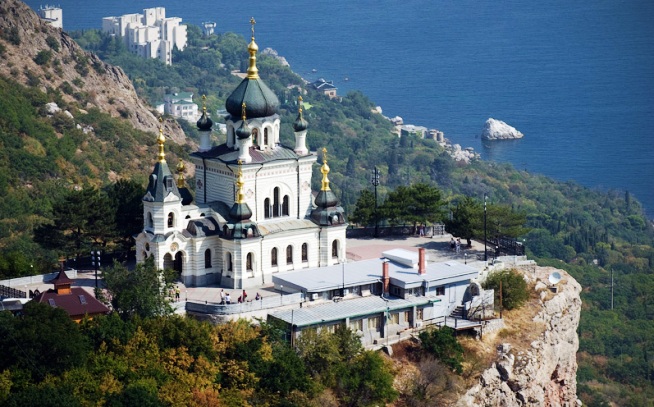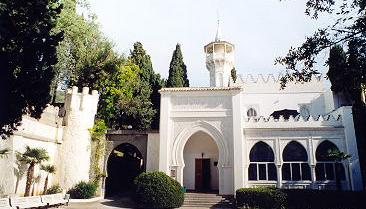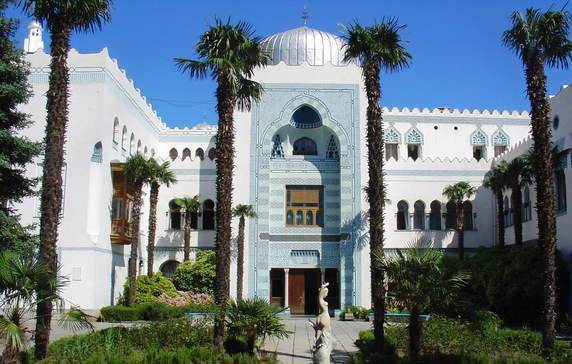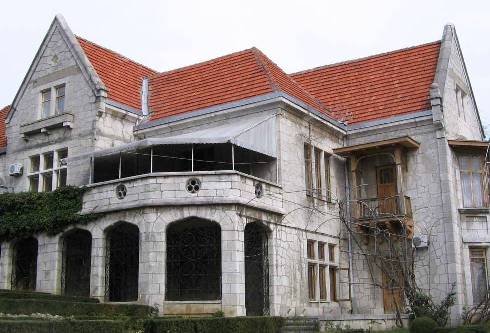Haisyn [Gaisyn, Gaysin]
On the blessed Gaisyn land surprising is harmonious unity of hard-working people, settled here since immemorial times, and beauty of local nature, with large forests, fertile soils, fresh water springs and slow rivers. Unity which resulted in long and glorious history, original culture, customs, rites and traditions of local people...
Gaisyn region occupies eastern part of the Vinnytsia oblast, being located on the hills of Transdnieper upland. The region within its current boundaries was established in 1923. Surface of the region has wavy relief, and is traversed by rivers, gullies and ravines. Hydrographic network is represented by the Pivdennyi Bug River, and by the Dob and the Kiblych rivers. Water basin occupies area of 2 417 ha. There are 219 artificial ponds and Dmytrenkivske water storage facility, with the total area of 479 ha.
The history of the region looks back to the Middle Ages and even earlier. These lands were the scene for many historical, political, social and cultural events, which occurred in Ukraine. Gaisyn is one of the 24 cities and towns of the Vinnytsia oblast listed as historical localities of the national scale. Within the boundaries of the regional center (city of Gaisyn) were found the remnants of two settlements referred by archeologists to the late Bronze Age and one settlement, referred to early Slavic period (so called Cherniakhiv culture).
At the end of the 16th century the territory currently known as Gaisyn region was devastated by Tartar Hordes. Several Kuremsa's nomad camps persisted in southern part of Bratlsav domain (province). In 1569 Bratslav province was annexed by Poland under the Liublin Union. 11 years after establishment of Bratslav domain (1580) the lands, located in the middle stream of the Sob River, were granted by the King of Poland to Tromchynski. These territories were called Galshchyna. History of Gaisyn takes its origin from that time, when the city itself was called also Galshyn or Aisyn.
A number of legends offer explanation of the city's name. According to one of them, Gaisyn was a manor of a wealthy landlord, and was located in the middle of dense forests and marshes. Landlord's son, keen on hunting, once fell in marsh and drowned, having left no trace of his presence. It broke the heart of his father, who fell mad and started rambling through the surrounding forests and marshes, calling out his perished son with the words «Hey, son» (in Ukrainian transliteration «Hey, syn»), which subsequently gave name to the city — Gaisyn.
Other legend says that initial form of the name, «Galshyn», was a Polish-Lithuanian word for «forestry». At that time these lands were indeed covered by dense forests.
According to the hypothesis proposed by local historian and ethnographer P. Melnyk from Koziatyn region, Gaisyn arose on the place of destroyed settlement, bearing the name of Gaitosyr, Old Slavic God of South and the Other World. His symbol was bird flying in the sky. Gaitoshyr also is one of the names of the stork. To support this hypothesis is the ancient coat of arms of Gaisyn: wing with blue sky in background.
Other researchers believe that the name «Gaisyn» originates from the word «gaishyn», which means «forest warden's hut» (forest warden was formerly called «gaiovyi», «gayivnyk» — «wood warden»).
First purpose which spurred Tromchynski's noble family to construct Gaisyn fortress was the need to protect Bratslav - Uman road (especially at the point of Sob River crossing) from Tartars raids. But the fortress was also used by Polish gentry to repress local peasants' revolts. Selecting the place for construction Tromchynski's made a good choice, having properly developed construction: the castle was built on the high bank of Sob River, and three sides of the castle were surrounded by dirt wall and oak paling. The castle had two-storeyed iron gate. The only way to enter the castle was going through the lift-bridge, landed by guards on the chain. Within subsequent 20 years (1580-1600) the whole settlement rose around the fortress.
Residents of the region had to struggle for national liberation against feudal oppression, hampering economic growth of the city.
Hundreds of Gaisyn region villagers participated in insurrections under the lead of K. Kosynskyi (1591 -1593), and Severyn Nalivaiko (1534 -1596).
Mass riots against Polish gentry oppression grew to Liberation War under the lead of Bogdan Khmelnytskyi. Cossacks and villagers units were raised in Gaisyn to join the insurgent Army. In December 1648 the Cossack regiment led by Ivan Bogun defeated Polish troops at Karbivka village, not far from Gaisyn.
The region did not escape fierce raids and attacks by Turkish janissaries of Sultan Mahomet IV.
In 1744 Gaisyn was granted the status of city governed by Magdeburg Law. The King of Poland Augustus III gifted a coat of arms to the city, representing green field with a silver wing, as a symbol of His Majesty's power over this restless region, motherland of Haidamaks.
In 1768 significant part of population of Gaisyn and neighboring villages participated in the events of Koliivshchyna riot. Many of them joined the units of Ivan Gonta and Maksym Zalizniak.
After the second division of Poland (1793), Podillya and Bratslav province went under the Russian rule. Gaisyn region became part of the Bratslav province, and the city of Gaisyn — administrative center of the district. After constitution of Podillya province (1796) Gaisyn became administrative center of «uyezd» (district). In 1796 Saint Nicholas stone Church was built in Gaisyn.
At the beginning of the 19th century, during Russian actions in European military campaign, Siverskiy Dragoon Regiment was quartered in Gaisyn. One of the Regiment's officers was Ivan Petrovych Kotliarevskyi, outstanding Ukrainian writer, author of «Eneida». Widespread assumption exists that Alexander Sergeevich Pushkin visited Gaisyn in 1822, on his way to exile.
In May 1886, under the auspices of Archpriest Nikandr Mikhnevich, was laid the foundation of the city Church of the Patronage of the Mother of God (currently the central city square, Ploshcha Myru, i.e. Peace Square, occupies the church's place). It was beautiful five-domed brick construction, standing on stone plinth, with high bell tower. Wooden three-tier iconostasis was the main beauty of Church's interior. Near the temple there was cemetery. In 1930' this Church, as many other sacral architecture buildings, was destroyed by militant atheists.
In 1902 the city Library was founded in Gaisyn. Today Gaisyn's Library is a real guide in the world of books, newspapers and printed materials, and, in general, in the sea of information, including local history and ethnography materials.
Storms of Revolution, Civil war, devastating First and Second World Wars blew over Gaisyn. Those streets and squares over the Sob River remember numerous strikes and revolts, as well as the years of collectivization and industrialization, accompanied not only by aspired economic growth, but also by Great Famine and repressions...
Harsh times of the Great Patriotic War are still living in memory of the people. Nazi invaders established «new order» immediately after their intrusion in the city. During the years of Nazi occupation the population of Gaisyn decreased by 10 thousand inhabitants. Aggressors established in Gaisyn army prisoners camp. Mass extermination of the civilians were performed until the last day of Nazi occupation. According to very approximate data, Nazis sent to Germany for forced works over 3200 inhabitants of Gaisyn region.
Gaisyn region community reveres the memory of fallen heroes, of those who died for independence and liberty of their motherland. Several majestic monuments in Gaisyn Bogdan Khmelnytskyi City Park have been installed at common graves of the soldiers, partisans and Resistance members, perished during the Great Patriotic War.
On 24th of July 1998 Gaisyn City Council approved the design of new coat of arms of the city, symbolizing power of local authorities, freedom-loving local people, and wealth of the region. This event became a milestone in modern history of Gaisyn community.
Today Gaisyn is one of the biggest cities in Vinnytsia oblast, its important economic and cultural center.
What are the most important tourist attractions of Gaisyn and region? First of all, architectural gems and original urban constructions.
Following are the most interesting buildings located in Gaisyn and region:
Schpilberg mansion, 20th century, B. Khmelnytskogo Street (Gaisyn);
Litvakovski House (Gaisyn attorney at law), first decade of the 20th century;
Former Men Classical School, beginning of the 20th century.
Three above mentioned constructions in 2003 were included in the list of local historical and architectural heritage, prohibited from privatization.
Other historical constructions and buildings loved by Gaisyn residents are:
Former classical school building (early 20th century), hosting Museum of local history and ethnography now;
Grand-Hotel, 1905, located at: 1, Pershhogo Travnia Street (Gaisyn);
Office (Administrative) Building, 1899, located at: 26, I. Franka Street (Gaisyn).
Historical and architectural heritage of the region also include the Church of the Monastery of Holy Dormition (1867), belonging to Graniv Monastery in Tyshkivska Sloboda village. This unique church is painted with images of the Saints and quotations from prayers. The church is included in the National Register of Architectural Heritage of Ukraine. Name of the Monastery originates from the big Graniv village, although being distant 10 km from Graniv, on the opposite side of Vinnytsia - Kropyvnytskiy highway, in the small (55 inhabitants) Tyshkivska Sloboda village (formerly it was called simply «Sloboda», which means «free settlement»).
«Do not boast of household, boast of housewife», local proverb validly says. People are the biggest wealth of any city, any town or village. People residing in Gaisyn may boast of their countrymen. And they do hold in reverence their names. Vasyl Semenovych Stus is absolutely the most honored figure in the local pantheon of artists and poets. Other than poet he was an ardent human rights advocate, awarded with the title of the Hero of Ukraine, and with the Nationa Taras Shevchenko Prize in Fiction and Poetry.
Today he is said being a national pride and his name is one of the most frequently mentioned by national media. Residents of the small Rakhmvka village in Gaisyn region know for sure: he is. Their testimony is trustworthy as Vasyl Stus made his first steps in his life by this land.
Every year events aimed to honor Vasyl Stus are held in Gaisyn region. His museum was opened in his native village's school, and very soon gained rightfully the status of folk museum. The monument to the poet reminds to the guests how important is the word in our life, the gift of speech and the national language, when the word comes from the heart of pure-minded and courageous man, a man like Vasyl Stus.
Wishing to share their esteem to the poet with the people traveling by Uman - Krakovets highway, local residents opened so called «Stus Wells» with commemorative plaque. The wells are located at the turn of the highway to Rakhnivka village. Every traveler may drink healing water, and pay homage to the poet and his contribution to the national self-consciousness of the Ukrainian people.
In Gaisyn was born Emil Gorovets, a I960' star of the Soviet pop music. His voice inspired and enchanted people not only in the former USSR, but also in Europe, Asia, America and Australia. Music and text of great talent, along with the skilful and heart-felt performance resulted in real masterpieces.
In Mykhailivka village was born Mykola Zinchuk, currently professor. Doctor of Geology and Mineralogy, Honored Geologist of the Russian Federation, Fellow of the Academy of Natural Sciences of the Russian federation.
In Gaisyn was born Anatoliy Bluger, one of the top researchers of medical science.
Krasnopilka village is well-known in Gaisyn region. The name means «Beautiful Fields»: «Krasne» means «beautiful» (in Ukrainian also means «red»), «Polc» means «ficld». Such name is absolutely justified as the village is located in a picturesque place, among gardens and fields. These lands gave to the country future heroes of labor and combat: chemist I. K. Delimarskyi, Fellow of the Academy of Sciences of the Ukrainian SSR, and D. O. Chuta, awarded with the title of the Hero of the Soviet Union for his unparalleled courage during forced crossing of Dniepr River.
Krasnopilka residents are proud of their Rural Museum of Village History, boasting of the biggest number of exhibits (over 600) among similar museums in the oblast. Museum was established in 1976 due to initiative and big efforts of Nykyfir Terentiyovych Gromovyi, devoted to the history and crafts.
Beautiful scenery surround Stepashky village, located on the banks of Pivdennyi Bug River. This beauty always attracted people who loved freedom. Stepashky was a stronghold of Cossacks, nourishing courage and independence in local residents. Stepashky today can offer to the guests not only heroic history but also good opportunities for holiday and rehabilitation: there are many youth camps and recreation centers. Hundreds of children from Vinnytsia oblast come to Stepashky every year during summer season to spend their holidays, as well as families from Ukraine and other countries.
On both banks of Verbychka river, at 16 km from Gaisyn and 120 km from Vinnytsia is lying Graniv, an old village, whose residents in 2007 celebrated 1000 anniversary of their small motherland. Graniv residents are sure that their village is one of the oldest settlements not only in Vinnytsia oblast, but in Ukraine. Foundation date of the village was discovered by local ethnographer and author of the village history Feofil Laziuk, who made his research in the library of the local church before the Revolution of 1917.
Unique wooden Dormition of the Virgin Church resisted the time and can be seen now in Kysliak village. They say that the church was built more than 300 years ago (1708) on the costs collected by Cossacks. Other people say that the church is more than 500 years old, and was built in another place, and earned to Kysliak 300 year ago. Today this piece of sacral architecture is protected by law as national heritage. The church has seen good times and bad times, and resisted even the period of militant atheism. Ironically, it may definitely decay in the period of democracy and freedom of religion, being in desperate need of reconstruction and repair. Unfortunately, donations made by parish people are not sufficient for reconstruction. Therefore, local community is collecting funds for these purposes, and will appreciate any small contribution.
People in Gaisyn region preserve and promote folk customs, traditions, arts and crafts characteristic to the region. Novosclivka village (subordinated to Bubnivska Village Council) is known not only in Gaisyn region, but in the whole Ukraine, for consummate mastery in pottery. In the 1920's brothers Iakym and Iakiv Gerasymenko were producing bright pieces of pottery of traditional shape, bearing floristic and geometric patterns of design. They were producing jugs and pitchers, kegs and rundlets, flacks and water bottles, ornamented tiles, plates, bowls and tureens, dishes, toys, fancy tableware, as well as tea services and dinner sets, many of them, for the first time in Podillyan folk pottery production. Their decorative dishes and plates, and other tableware were exhibited in Vinnytsia, Kyiv, Moscow, Leningrad, Paris, New York, winning gold medals.
Frosyna Mishchenko, their niece and Honored Master of Folk Arts and Crafts, continued their tradition in pottery.
Novoselivka Brothers Gerasymenko Museum can boast of more than 670 unique exhibits, pieces of pottery made by Gerasymenko brothers, by A. Gonchar, embroidery, embroidered decorative towels, and art gallery exhibiting landscapes and still life by M. Babak, single paintings by F. Mishchenko.
Other than pottering Novoselivka is famous for its original weaving, embroidery and woodworking. Local beautiful landscapes inspire Novoselivka talents to creation of new masterpieces.
Ziatkivtsi village is motherland of Gnat Tantsiura, noted folklore researcher and ethnographer, devoted Ukrainian folk songs collector. As fate willed, Tantsiura met lavdokha Zuikha, folklore expert. Tantsiura kept recording her songs during 12 years. As a result he transcribed and recorded 1008 songs, 156 tales, 394 sayings and proverbs, many riddles and other ethnographic materials.
Gnat Trokhymovych Tantsiura was a tireless and industrious collector of folk masterpieces since adolescent years. During 46 years he transcribed 5 thousand songs, one thousand tales, legends, stories, jokes, anecdotes, more than 1.5 thousand sayings and proverbs, 144 pieces of instrumental music, hundreds of spells, lamentations and omens. Gnat Tantsiura died in Gaisyn, to commemorate his big work local community established Tanstiura's museum, where Natalya Gromova, Gnat Trokhymovych's daughter, welcomes visitors over the last decades.
The memory of la. Zuikha lives in the hearts of her country people. Old Ziatkivtsi residents remember this elder lady, masterly singing folk songs. She was not only a good farm worker, but a person spellbound by the beauty of folk songs, our everlasting spiritual heritage. There is a street in Ziatkivtsi village bearing her name, and in Tantsiura's museum there is an exhibition telling about Zuikha'a life and oeuvre. Museum is venue for various events, concerts, song festivals, including «Iavdokha's Name Day» festival. Old rural house, where lavdokha Mykytivna lived and sang her thousand songs to Gnat Tantsiura, still stands on the hill, looking on the nearest wood, green fields and gardens. Ziatkivtsi residents take care of Zuikha's tomb. Residents of Kushchynhtsi village, where folk singer lavdokha Zuikha was born, erected monument in her honor.
Monument «Folk Song Forever» was inaugurated in Ziatkivtsi. Figures of IA. Zuikha and G. Tantsiura stand on the marble stele as custodians of folk wisdom. Their mission is to bring such wisdom to coming generations. On the stele the words from the song «Sycamore Tree Bends Over the Water» can bee read. This song was performed by 1A. Zuikha and transcribed by G. Tantsiura. This is the first monument to folk song in the world. lryna laremivna Dubytska from Gaisyn inherited from her grandfathers not only big love for Taras Shevchenko's poetry, but also a big talent for folk embroidery. Her patterns arc traditional, but, at the same time, characterized by bright colors.
Iryna Dubytska had talented teacher, folk collector and researcher Gnat Tantsiura, with unusual for men hobby — embroidery, lryna Dubytska embroidered the whole «Kobzar» book, Taras Shevchenko poetry, and his «Zapovit» (Testament).
In Gaisyn lives Stanislav Georgiyovych Shagurin, gifted embroiderer, who kept embroidering even during the War. His numerous works are made in one-thread cross-stitch technique, stitches are as small as poppy-seed. Embroiderer thoroughly selects patterns, copies them on fabric and then makes his beautiful embroideries, operating only with needle and thread. Stanislav Shagurin produces pieces in various themes, religious, historical and fairytales. He also created series of eight works dedicated to Taras Shevchenko and his oeuvres.
Picturesque scenery around Gaisyn has always attracted tourists. Of national importance is Korostovetskyi landscape reserve, where numerous millenary boulders are lying, by nature's caprice, on the rocky hills of the wood, descending to Pivdennyi Bug River. Korostovetskyi landscape reserve is surnamed by people "Podillyan Switzerland", due to its resemblance to Swiss woody Alps scenery.
In the river stream canal there are small islands, covered by shrubs. Forest almost approaches the river, then climbs to the hills, getting thicker and thicker. Majestic view of giant granite boulders standing among the open woodland on the mountain peak impresses tourists.
Korostovetskyi landscape reserve is not the only one, there are 12 others, of regional importance, and one wildlife preservation in Gaisyn region.
Local community protects this beauty, preserving it for coming generations.
We welcome our guests to come and see Gaisyn region natural wealth, to undertake interesting tours, to establish new contacts, which might result in promising business opportunities.
Tourist Vinnychyna. Ethnography Guide. Comp. of ukrainian text O. Kizian

